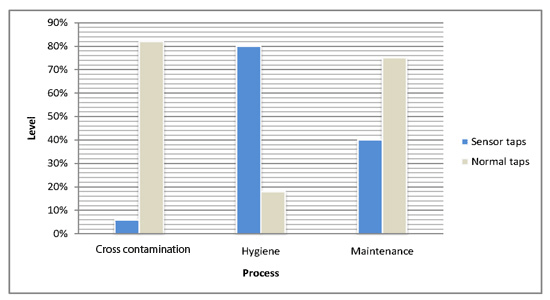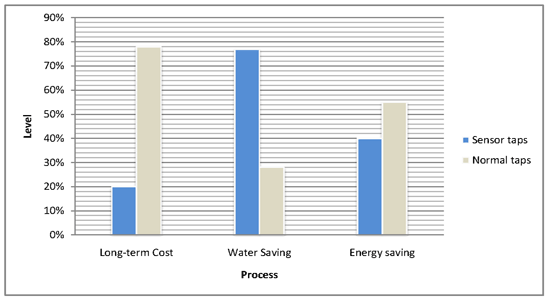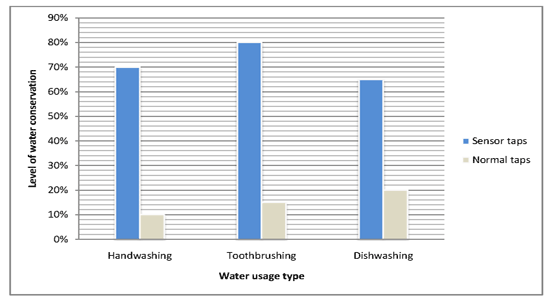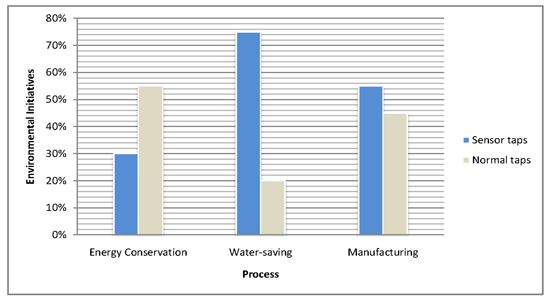Sensor tap Water Conservation Charts
AUTOMATIC TAPS FACTS AND CHARTS
FACTS AND CHARTS ON SENSOR TAPS AND MANUAL TAPS

CROSS CONTAMINATION
The level of cross contamination when using a manual tap is significantly higher than sensor tap.
With sensor taps, the user does not need to touch the tap to get water. Water is dispensed automatically using infrared sensor activation.
HYGIENE
With nothing to reach or touch, sensor taps are more hygienic and promotes germ-free environment. With manual taps, germs and dirt are easily transferred from user to tap or vice versa.
MAINTENANCE
Automatic taps requires less maintenance in terms of parts replacement, cleaning and everyday wear and tear.
LONG-TERM COST
Taking water conservation into consideration which in turn saves money on water bills, sensor activated taps saves more money long term.
WATER SAVING
Users can save up to 70% on water conservation when compared with manual activated taps. A lot of water is wasted when turning the tap on and off manually. With sensor taps, the tap is activated or deactivated within 0.5 second, and does not drip, a common problem with manual taps.
ENERGY SAVING
There's more energy needed when producing sensor taps, but this is greatly reduced when it comes to the amount of water it saves long-term. With manual taps, a lot more water is wasted, which means that a lot of energy is needed to re-process the wastage water back to the consumer.
With sensor tap, less water is wasted and less water for processing plants to process. The level of energy saved is usually not apparent at short-term, but adds up at long-term basis.
HAND WASHING
Water wasted when washing hands is significantly higher where a manual tap is used. With automatic taps, water is dispensed exactly when needed and shuts off automatically when hands are removed or outside the infrared sensing zone.
TOOTH BRUSHING
Water is wasted at astonishing 5 litres a minute while tooth brushing. People's habit during tooth brushing is to leave the tap on whilst brushing the teeth. This type of problem is absent when it comes to sensor taps. Water is dispensed when needed and automatically shuts off when the user withdraws away from its infrared or proximity zone.
DISHWASHING
It's also a common trend to leave the tap running while doing the dishes. With sensor taps, water is dispensed when needed.
ENERGY CONSERVATION
In terms of environmental impact, manual taps are discarded in higher percentage than sensor automatic taps. With higher rate, more energy or resources are needed to dispose or recycle them. With most places using normal or conventional taps, the energy cost is considerably higher. Once sensor taps market penetration begins to increase, the graph above will start to change.
WATER CONSERVATION
Users can save up to 70% on water conservation when compared with manual activated taps. A lot of water is wasted when turning the tap on and off manually. With sensor taps, the tap is activated or deactivated within 0.5 second, and does not drip, a common problem with manual taps.
MANUFACTURING
The level of environmental impact of manufacturing is higher in sensor tap. Sensor taps comes with more parts and accessories. As technology and manufacturing process improves, sensor taps will require less parts and less energy in making them.


